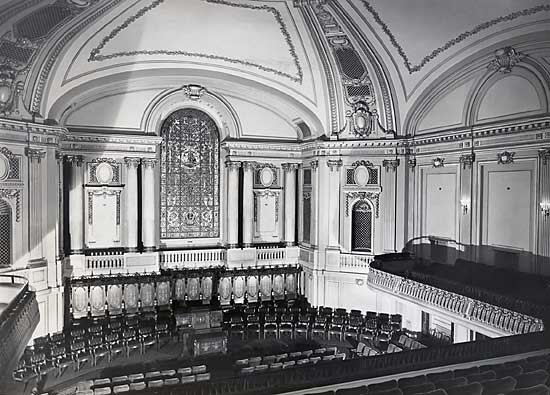Educated at the University of Georgia, Athens, and the Johns Hopkins Medical School in Baltimore, MD, Dr. Blalock remained at Johns Hopkins for three years after completing his medical degree, hoping to become one of its surgical residents. When the hoped-for residency position did not transpire, he moved on to Vanderbilt University, Nashville, TN, in 1925, where he became the first surgical resident at the newly opened Vanderbilt University Hospital. It was during his time at Vanderbilt that Dr. Blalock conducted his pioneering work on the nature and treatment of traumatic and hemorrhagic shock—work that is credited with saving the lives of many during World War II. He remained at Vanderbilt—where he rose to the rank of professor—until 1941, when he accepted the position of surgeon-in-chief of Johns Hopkins Hospital and professor of surgery and director of the Johns Hopkins Medical School’s department of surgery, positions he held until retiring in 1964.2
In 1944, Dr. Blalock; Helen Taussig, MD, a pediatric cardiologist; and surgical assistant Vivien Thomas pioneered and performed the first successful operation on a patient with tetralogy of Fallot, or “the blue baby syndrome.” The condition involves cyanosis—an enlarged right ventricle, a hole in the wall between the heart’s two major ventricles, a defective pulmonary valve that stops the complete flow of blood to the lung. The patients’ outward blueness of the flesh indicates cyanosis, caused by the lungs’ inability to oxygenate enough blood for the circulatory system. Dr. Blalock operated on an infant with tetralogy of Fallot and created the first Blalock-Taussig shunt between the subclavian artery and the pulmonary artery. Prior to the 1945 publication of the landmark paper about the operation, “The surgical treatment of malformations of the heart in which there is pulmonary stenosis or pulmonary atresia,” in the Journal of the American Medical Association, a “blue baby” with a malformed heart was thought to be “beyond the reach of surgical aid,” according to coauthors Drs. Blalock and Taussig. However, their paper reported on three pediatric cases in which cyanotic children were cured by an operation.2
It was in the stimulating atmosphere created by the Blalock-Taussig operation that Dr. Blalock also worked with C. Rollins Hanlon, MD, FACS, who later served as ACS Director (1969–1986) and President (1987–1988), on operations to fix congenital heart disease. Drs. Blalock and Hanlon collectively developed the Blalock-Hanlon operation, a procedure that rearranged the congenitally transposed great vessels of the heart that carry blood away from the heart in order to improve the circulatory system’s ability to transport oxygenated blood.3
References
- Ravitch M. Alfred Blalock, 1899-1964. Bull Am Coll Surg. 1965;50(2):85.
- Alfred Blalock, MD, Surgeon (1899-1964). The Alan Mason Chesney Medical Archives of the Johns Hopkins Medical Institutions website, www.medicalarchives.jhmi.edu/blbio.htm. Accessed January 8, 2013.
- In memoriam: C. Rollins Hanlon, MD, FACS, remembered. Bull Am Coll Surg. 2011;96(9):47-52.
ACS Archives Highlights is a series showcasing the vibrant history of the American College of Surgeons, its members, and the history of surgery. For further information on our featured highlights, search the Archives Catalog or contact the ACS Archivist.











